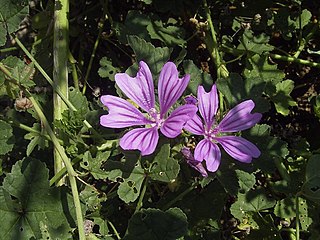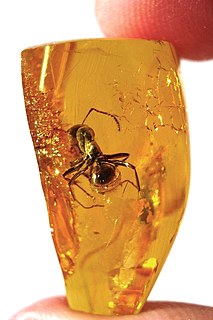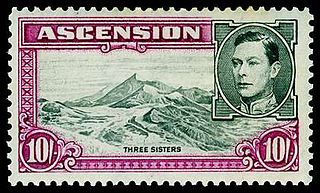Related Research Articles

Gold, also called golden, is a color.

Navy blue is a very dark shade of the color blue.

Mauve is a pale purple color named after the mallow flower. The first use of the word mauve as a color was in 1796–98 according to the Oxford English Dictionary, but its use seems to have been rare before 1859. Another name for the color is mallow, with the first recorded use of mallow as a color name in English in 1611.

Beige is variously described as a pale sandy fawn color, a grayish tan, a light-grayish yellowish brown, or a pale to grayish yellow. It takes its name from French, where the word originally meant natural wool that has been neither bleached nor dyed, hence also the color of natural wool. It has come to be used to describe a variety of light tints chosen for their neutral or pale warm appearance.

Lavender is a light shade of purple. It applies particularly to the color of the flower of the same name. The web color called lavender is displayed at right—it matches the color of the very palest part of the lavender flower; however, the more saturated color shown below as floral lavender more closely matches the average color of the lavender flower as shown in the picture and is the tone of lavender historically and traditionally considered lavender by the average person as opposed to those who are website designers. The color lavender might be described as a medium purple or a light pinkish-purple. The term lavender may be used in general to apply to a wide range of pale, light or grayish-purples but only on the blue side. Lilac is pale purple on the pink side. In paints, the color lavender is made by mixing purple and white paint.

A rosé is a type of wine that incorporates some of the color from the grape skins, but not enough to qualify it as a red wine. It may be the oldest known type of wine, as it is the most straightforward to make with the skin contact method. The pink color can range from a pale "onion-skin" orange to a vivid near-purple, depending on the grape varieties used and winemaking techniques. Usually, the wine is labelled rosé in French, Portuguese, and English-speaking countries, rosado in Spanish, or rosato in Italian.

The color amber is a pure chroma color, located on the color wheel midway between the colors of yellow and orange. The color name is derived from the material also known as amber, which is commonly found in a range of yellow-orange-brown-red colors; likewise, as a color amber can refer to a range of yellow-orange colors. In English, the first recorded use of the term as a color name, rather than a reference to the specific substance, was in 1500.

The color terms violet and purple have different meanings even among native English speakers in e.g. the United Kingdom and the United States. Therefore, the term Red-violet is contradictory by definition to most speakers in the United Kingdom and many other countries where violet by definition is limited to blue-dominated colors between blue and red. But in countries like the United States, the term Red-violet does make sense in the local color vocabulary, and then refers to a rich color of high medium saturation about 3/4 of the way between red and magenta, closer to magenta than to red. In American English this color term is sometimes used in color theory as one of the purple colors—a non-spectral color between red and violet that is a deep version of a color on the line of purples on the CIE chromaticity diagram. Both its saturation and brightness falling short of 100%, red-violet is not a pure chroma. There is a color of similar hue that, however, comes close to being a pure chroma: process magenta. The pure chroma color composed of equal parts of magenta and red is called rose.

Spring green also referred as Mint green is a color included on the color wheel that is precisely halfway between cyan and green. When plotted on the CIE chromaticity diagram, it corresponds to a visual stimulus of 505 nanometers on the visible spectrum. Spring green is a pure chroma on the color wheel. In HSV color space, the expression of which is known as the RGB color wheel, spring green has a hue of 150°. Spring green is one of the tertiary colors on the RGB color wheel.

Rouge, also called blush or blusher, is a cosmetic for coloring the cheeks in varying shades, or the lips red. It is applied as a powder or cream.
In optics, orange has a wavelength between approximately 585 and 620 nm and a hue of 30° in HSV color space. In the RGB color space it is a secondary color numerically halfway between gamma-compressed red and yellow, as can be seen in the RGB color wheel. The complementary color of orange is azure. Orange pigments are largely in the ochre or cadmium families, and absorb mostly blue light.
Varieties of the color green may differ in hue, chroma or lightness, or in two or three of these qualities. Variations in value are also called tints and shades, a tint being a green or other hue mixed with white, a shade being mixed with black. A large selection of these various colors is shown below.
Varieties of the color red may differ in hue, chroma or lightness, or in two or three of these qualities. Variations in value are also called tints and shades, a tint being a red or other hue mixed with white, a shade being mixed with black. A large selection of these various colors is shown below.
Pink colors are usually light or desaturated shades of reds, roses, and magentas which are created on computer and television screens using the RGB color model and in printing with the CMYK color model. As such, it is an arbitrary classification of color. Below is a list of some of the common pink colors.
Varieties of the color blue may differ in hue, chroma, or lightness, or in two or three of these qualities. Variations in value are also called tints and shades, a tint being a blue or other hue mixed with white, a shade being mixed with black. A large selection of these various colors is shown below.
Shades of white are colors that differ only slightly from pure white. Variations of white include what are commonly termed off-white colors, which may be considered part of a neutral color scheme.
The color cyan, a greenish-blue, has notable tints and shades. It is one of the subtractive primary colors along with magenta, and yellow.
There are numerous variations of the color purple, a sampling of which are shown below.
Shades of brown can be produced by combining red, yellow, and black pigments, or by a combination of orange and black—as can be seen in the color box at right. In the RGB color model used to create all the colors on computer and television screens, brown is made by combining red and green light at different intensities. Brown color names are often not very precise, and some shades, such as beige, can refer to a wide variety of colors, including shades of yellow or red. Browns are usually described as light or dark, reddish, yellowish, or gray-brown. There are no standardized names for shades of brown; the same shade may have different names on different color lists, and sometimes the one name can refer to several very different colors. The X11 color list of web colors lists seventeen different shades of brown, but the complete list of browns is much longer.
Rose is the color halfway between red and magenta on the HSV color wheel, also known as the RGB color wheel, on which it is at hue angle of 330 degrees.
References
- ↑ Maerz and Paul A Dictionary of Color New York:1930 McGraw-Hill Page 190; Color Sample of Blush: Page 47 Plate 12 Color Sample A7